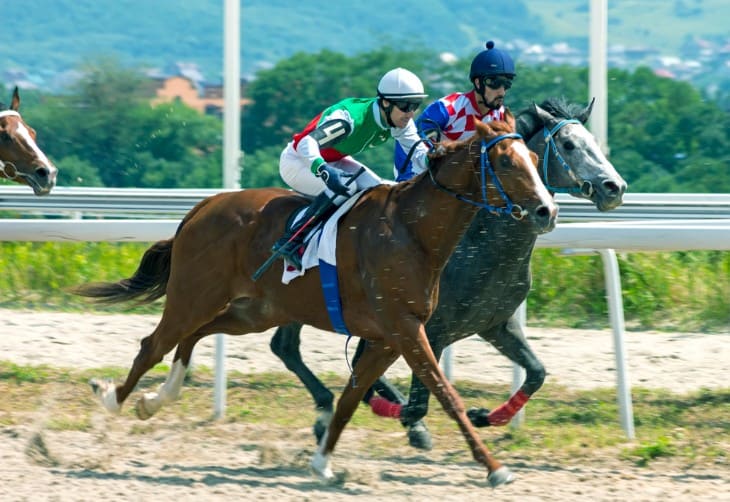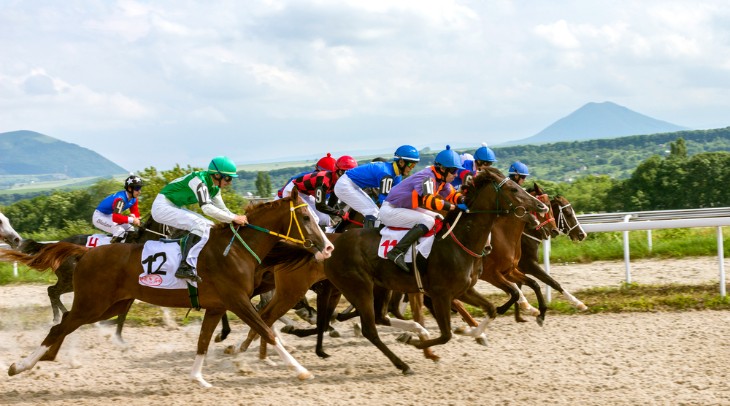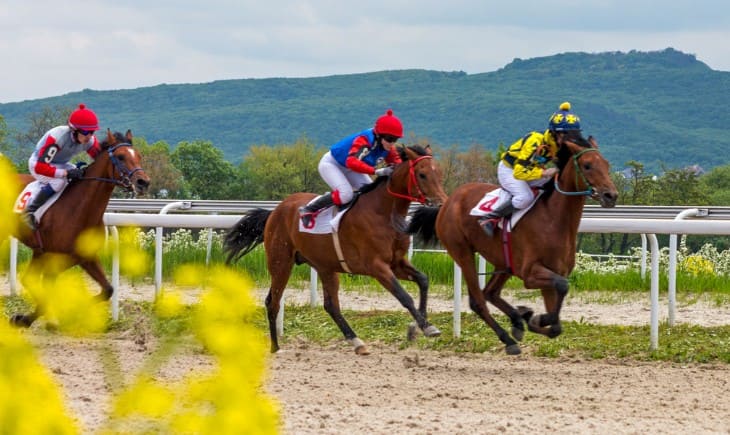Generally, when it comes to horse racing, the spotlight is usually on the sleek thoroughbreds galloping, their jockeys leading them and onlookers' applause. However, behind this façade lie unsung heroes of pony horses. In this article, we delve into a deeper understanding of these remarkable animals by asking "What is a pony horse in racing?"
Understanding the Role: The Basics of a Pony Horse
A pony horse, often referred to as a "pony" is an experienced trained horse that holds one of the most vital supportive roles in the horse racing industry. These horses are usually smaller compared to racehorses and may belong to different breeds. Their primary purpose is to help racehorses relax before, during and after races.
Before the Race
Pony horses play very critical if not major roles in preparing racehorses for any big race. While most attention goes to racers themselves they have a certain pony taking care of them towards opening the starting gates.
Among other things, one of the tasks a pony performs is keeping company with and offering solace to its high-strung acquaintanceship –the racer's spirit can be quickened with more than enough time to spare. This helps relax and concentrate them as they approach the beginning line thus reducing jitters and stress-related conditions.
At this point, both ponies and racers form what can be termed as teams. Together they go through warm-up exercises which could include various activities. Such activities assist the racer in familiarising himself with track surroundings; stretching his legs out finally preparing psychically for forthcoming races.
Moreover, another key aspect of guiding runners around tracks has been done by ponies. Many ponies are familiar with such places where there are tracks that enable them to operate exceptionally well within such environments. They must therefore ensure that during races, these horses become familiar with their surroundings hence minimising chances of being scared away or losing direction.
At the same time, horses can easily become restless or too excited as they near the starting gates. The pony horse is there to help calm these nerves and not get the racehorse overly agitated. The racehorse must start in a calm mental state to compete at its best.
Furthermore, their role includes preventing early fatigue. Through this, they can take a horse through warm-up exercises while being ridden by experienced riders. This clearly shows that a race should be carefully managed to prevent premature exhaustion of stamina.
During the Race
Also, during the actual race on the track, ponies continue maintaining vital roles. At times, when taking the racer into its starting gates; it often has the company of its pony right next to it for support and reassurance. For instance, it maintains peace in such tense situations simply because racing surroundings involve high-stress conditions.
When the gates open and racing begins, both ponies with their riders move onto tracks though slightly behind racers. This position serves several purposes; firstly, it makes horses realise there's someone familiar always close enough hence no abrupt changes in behaviour or panic resulting from unfamiliar surroundings during races.
Also, during the early stages of a race, the pony horse acts as a guide for the racehorse. The pony horse and its experienced rider can easily nudge back to safety any racehorses that veer off course or show signs of confusion to keep both horse and jockey from danger.
Furthermore, it can serve as a backup for when a racehorse decides to pull up or refuses to continue with the race. In such situations, the rider of the pony horse can help lead the reluctant horse away from the track so that others do not get injured.
In addition, the presence of this little animal is really important in ensuring that there are no fights during racing activities. This helps calm down the racers and reduce cases of mishaps in dangerous zones on tracks.
Post-Race Care and Cool Down
The post-race care and cool-down process of these animals after races also falls under the charges of pony horses. It is at this point where their well-being is assured after they have performed their roles on track.
Sometimes setting off home from the finish line towards the stable area might need the company of a pony horse and its rider along with other horses. This is because it soothes them down through familiar things calming them thus acting as an outlet for their high-charged behaviour hence being referred to as ponies.
Once they arrive at the stables, however, things don't end yet for them since those ponies still have specific roles to play. The post-race cool-down process involves walking around slowly while the heart rate decreases gradually until all muscles are cooled down for that particular day's races which usually takes an hour or two depending on how long it took them before getting ready at home again.
Furthermore, riders who take care of these animals can watch whether they are tired, injured or stressed out by anything related to racing activities so that necessary interventions can be done immediately should anything arise from there concerning stable employees being alerted or calling in a vet for help.
Sometimes, after a race, horses might feel jittery and anxious because of the adrenaline rush caused by the competition. Therefore, as soon as they get down from that pace, calmness will return to them through the presence of their attendant pony horse and rider thus ensuring their safety.

What Makes A Great Pony Horse?
Not just any horse can make it as a pony horse. These unsung heroes have certain characteristics and traits that make them a perfect fit for this job.
Calm and Steady Temperament
One of the most important traits of a race track’s pony horse is its calmness and being level headed which are key characteristics among others required. Let us consider it in depth:
- Calm Demeanour: On the whole, this equine is known to be cool-headed. This helps greatly since there are some highly active sprinters among racers. It keeps everything under control at the tracks due to its ability not to be distracted by whatever happens around it including other racehorses on course sometimes full of energy before starting with one another quietly standing there while looking ahead for another opportunity where none exists now.
- Steady Under Pressure: Race courses are fast-paced environments that can become quite intense at times; horses might show erratic behaviour because they tend to get an adrenaline rush when they are participating in such events therefore becoming hard to control such instances but unlike them, ponies do not get carried away easily under pressure hence making it easier for trainers who may want their animals guided towards these gates or brought back once again after finishing up down here else talking more about slow-downs after all big races done today whether those were either qualifying heats held earlier in morning time still followed closely behind longer main events through evening hours.
- Equine pals have trust: At the racetrack, racehorses often form strong bonds with their companion ponies. Trust arises out of the punctuality and reliability of these smaller horses which is very essential. For both riders and mounts, such trust means everything in terms of safety.
- Patience and Sensitivity: A pony horse is patient and sensitive to its rider's commands. They can alter their speed or behaviour at will; either by walking slowly after a race or running faster before it begins.
- Experience: This factor is highly valued in the case of riding ponies because experienced ones still stay cool and calm even under pressure. These are horses that have become accustomed to everyday situations on the tracks and have learned how to adjust without losing their minds.
Experience and Seasoning
- Accumulated Experience: One of the key attributes of a reliable pony horse is its experience and seasoning. These horses have spent a significant amount of time on the racetrack, often alongside racehorses. This exposure equips them with an in-depth understanding of the racetrack environment. This accumulated experience is invaluable.
- Race Day Scenarios: Seasoned pony horses have encountered a wide range of race day scenarios. From crowded paddocks to noisy grandstands, they have seen it all. This exposure prepares them to handle unexpected situations with poise. Their ability to navigate through chaotic surroundings while maintaining their composure is a testament to their experience.
- Training and Adaptability: Many seasoned pony horses have undergone specialised training to refine their skills. They learn to respond to specific cues from their riders and adapt their pace and behaviour accordingly. This training ensures that they can assist racehorses in various situations, such as during warm-ups, post-race cool-downs, or escorting them to the starting gate.
- Mentors for Young Racehorses: Experienced pony horses often serve as mentors for young and inexperienced racehorses. Their steady presence and guidance can help calm nervous newcomers to the racetrack. Young racehorses may look up to the seasoned pony horse as a role model, learning from their behaviour and adapting to the racetrack environment more smoothly.
- Safety and Reliability: Ultimately, the experience and seasoning of pony horses contribute significantly to the safety and reliability of horse racing events. Their ability to handle diverse situations while keeping a level head is crucial for the well-being of all involved.

Physical Fitness
- Athletic Condition: Pony horses must maintain a high level of physical fitness. They undergo regular exercise routines to ensure they are in excellent athletic condition. This fitness is essential for their performance on the racetrack. Physical fitness in pony horses is similar to that of racehorses, albeit at a slightly lower intensity.
- Endurance and Stamina: Endurance and stamina are critical attributes for pony horses. They need to accompany racehorses during warm-up laps, often covering considerable distances. Their stamina ensures they can keep up with the racehorses without fatigue. Their robust endurance enables them to perform their role effectively throughout a race day, which can be long and demanding.
- Muscle Tone and Strength: To assist racehorses effectively, pony horses must have well-developed muscle tone and strength. This enables them to provide stability and guidance to their racing companions. Strong muscles, particularly in the neck and shoulder areas, are essential for maintaining control and communicating with racehorses through the reins.
- Weight Management: Managing weight is also a crucial aspect of physical fitness for pony horses. They need to maintain a healthy body weight to ensure they are agile and responsive. A well-balanced diet and regular exercise are key components of weight management for these horses.
- Injury Prevention: Physical fitness not only enhances their performance but also reduces the risk of injuries. Fit and well-conditioned pony horses are less likely to strain muscles or experience fatigue-related problems.
Excellent Rider Communication
- Clear Signals: Effective communication between the rider and the pony horse relies on clear and concise signals. Riders use reins, body movements, and voice commands to convey instructions to the pony horse. This clarity ensures that the pony horse understands the rider's intentions. Clear signals are essential for maintaining control and guiding racehorses safely.
- Experience Matters: Experienced riders often excel in communication with pony horses. They have a deep understanding of horse behaviour and can adjust their cues accordingly. Novice riders may need more time to develop these skills. Years of experience contribute to a rider's ability to communicate effectively, especially during high-stress race situations.
- Trust and Bond: A strong bond of trust between the rider and the pony horse enhances communication. When a pony horse trusts its rider, it is more likely to respond promptly to cues and directions. Building this trust takes time and consistent positive interactions. Trust is the foundation of successful communication, and it's nurtured through patient and respectful training.
- Responsive Feedback: Effective communication involves not only giving cues but also receiving feedback from the pony horse. Riders must be attentive to the horse's responses and adjust their signals accordingly. This responsiveness creates a dynamic and cooperative partnership. Pony horses often provide subtle feedback through their body language, and skilled riders can interpret these cues.
- Continuous Training: Communication skills are honed through continuous training and practice. Riders and pony horses regularly work together to refine their signals and responses. This ongoing training ensures that the partnership remains effective. Training sessions are essential for maintaining and improving communication between riders and pony horses.
In Summary
In the glitz and glamour of horse racing, it's easy to overlook the contributions of pony horses. These remarkable animals, with their calm temperament and unwavering support, play a crucial role in ensuring the safety and success of racehorses. So, the next time you watch a thrilling horse race, take a moment to appreciate the unsung heroes - the pony horses - who work tirelessly behind the scenes to make it all possible.







